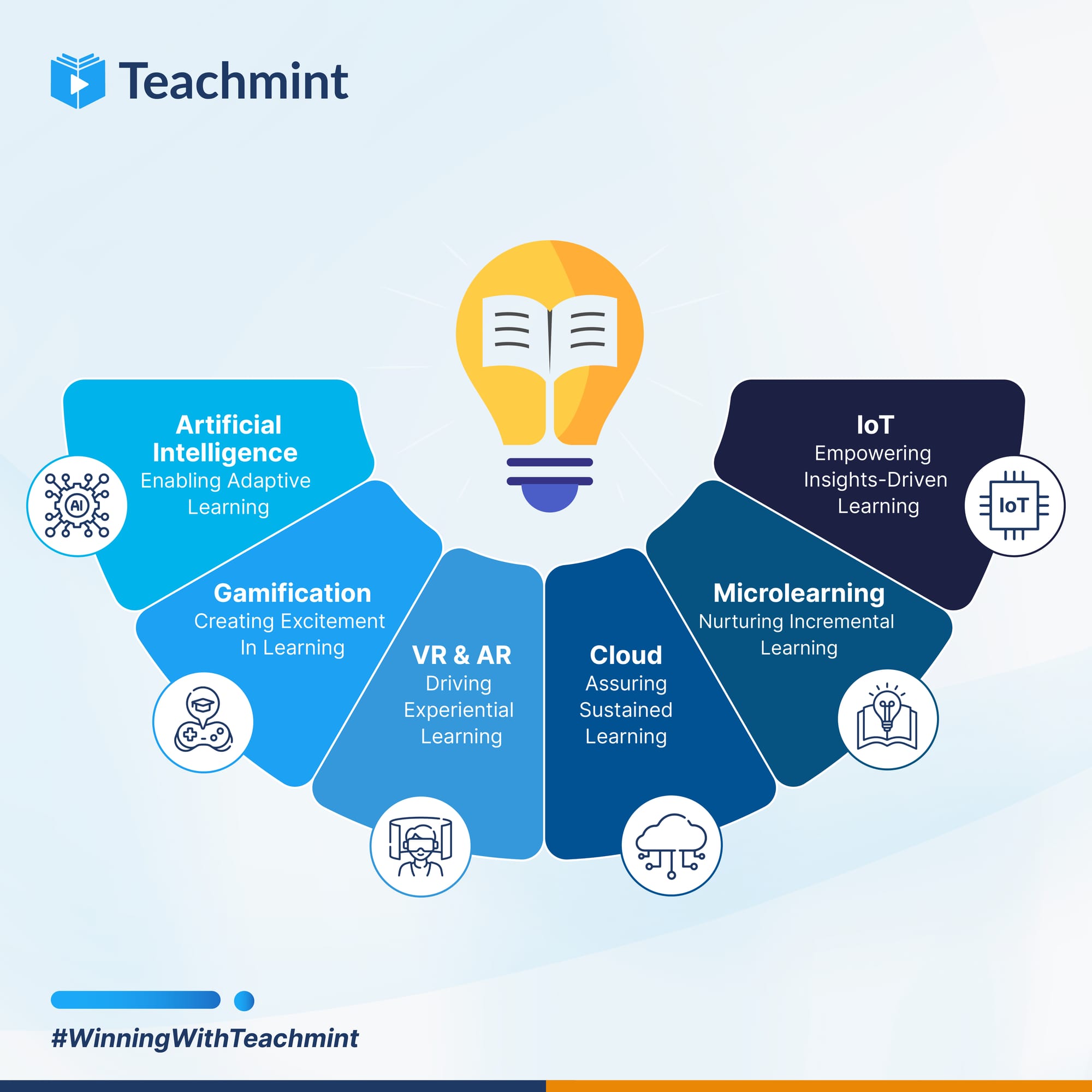The educational landscape is undergoing a rapid transformation, driven by the relentless march of technology. In harmony with the evolving trends in society, the realm of education is witnessing a profound shift, marked by innovative digital tools and technology-driven teaching and learning methodologies. These advancements are reshaping contemporary classrooms, arming students with essential 21st-century skills. As we find ourselves in the year 2024, advanced technologies are not just influencing but fundamentally shaping the K–12 educational experience. Schools are acutely attuned to this reality, recognizing the imperative to stay abreast of the latest technological trends. The goal is clear: to create immersive learning environments that offer engaging experiences, ultimately leading to effective outcomes for students. Join us as we explore some of the groundbreaking trends shaping education in 2024.
Artificial Intelligence: Enabling Adaptive Learning
Every student does not have the same aptitude and capability. It is difficult to manually gauge and act upon the unique traits of every student. This is where AI steps in by analyzing vast data, personalizing the learning experience for each student, and customizing content, pace, and difficulty levels based on their specific strengths and weaknesses. This ensures that every student receives personalized attention and progresses at the right pace.
AI enables teachers to create lessons that cater to diverse student needs, driving inclusive, effective learning. AI also empowers automation, which in turn frees up teachers from the overhead of performing administrative tasks like setting schedules, grading students, etc.
VR and AR: Driving Experiential Learning
We have all been through the chapters of our textbooks during school days. As important as they were, those lessons were boring at times. Virtual reality offers students the opportunity to explore places and concepts outside the classroom. This provides practical experience for the student beyond the textbook lessons. For example, imagine biology students taking a tour inside a human body and seeing the organs live in action!
AR brings imagination to life, enabling visual, tangible experiences in immersive 3D environments instead of only textual learning. Take, for instance, a history class where students wear AR glasses to witness historical events. Or for that matter, a chemistry student plugging in molecules in space to trigger chemical reactions. This experiential learning enables faster grasping of concepts and longer retention of knowledge, with little or no reliance on memorizing.
AR and VR enable collaborative projects involving students across geographies working together. This provides significant cross-cultural exposure and the ability to work in diverse teams at a young age, which is a very valuable skill in the workplace, given the global world we live in.

Gamification: Creating Excitement In Learning
Games, challenges, contests - all of these give an adrenaline rush, don’t they? Gamification of learning is indeed a smart way to increase the involvement of students in courses and assignments. A digital points and rewards system for completing assignments or achieving certain learning milestones is a proven way of motivating students. Creating leaderboards to foster a sense of achievement and healthy competition goes a long way toward accelerating learning. Quests and challenges with progressive ‘levels’ of achievement, akin to video games, motivate students to strive for the next ‘level’. Interactive learning and assessment platforms with quizzes, modules, and more also engage students.
Microlearning: Nurturing Incremental Learning
Microlearning breaks down educational content into bite-sized modules, typically lasting a few minutes each. Microlearning modules are typically delivered through digital channels, allowing students to access the materials anytime, anywhere, and at their own pace. Microlearning is tied to specific modules, which allow students to proceed methodically, mastering one topic at a time. Specific feedback for a particular module helps with effective course correction. Besides allowing students to pace themselves, microlearning is typically delivered according to the preferred content format. So whether the student prefers podcasts, audio files, videos, or anything else, microlearning enables personalized delivery. Microlearning can be integrated with the regular classroom and/or app-based learning to enhance overall learning. Microlearning is aligned with the philosophy of ongoing education and the flexibility of personalized learning.
Cloud: Assuring Sustained Learning
Cloud hosting of applications and the SaaS paradigm have enabled several benefits. For education, it provides a consistent and reliable experience for teachers and students by ruling out downtime or system availability issues. It also relieves school administrators of the burden of maintaining infrastructure. It also rules out any concerns related to information security breaches and keeps the learning environment safe and sustained.
IoT: Empowering Insights-Driven Learning
We are looking at a world where your chair, table, and even your toothbrush could be IoT-enabled - so much data to consume and make sense of! Just to clear the air around IoT devices, any object that has a sensor attached to it and can transmit data with the help of the internet is an IoT device. Think about your Fitbit or any other wearable that transmits your health data to a mobile app for analysis - that’s IoT in action! IoT opens up a plethora of options for educators to get data-driven insights and deliver improved learning outcomes. Smart classrooms are equipped with IoT-enabled devices, interactive whiteboards, etc., which can be used to monitor the classroom environment, track student engagement, and provide real-time feedback to students and teachers. In addition, there are wearables for students that provide insights into her/his engagement levels, attention spans, and more. These insights can be particularly useful for students who need significant help in improving their academic performance.
Conclusion
In conclusion, the K–12 educational landscape is being constantly enhanced by technology. It’s important to use these new ways of learning in conjunction with traditional textbook methods. The onus is on teachers to enable responsible usage of these technologies, respect privacy, and ensure that distorted or misleading learning does not impact the impressionable minds of the students. In a nutshell, the responsible usage of technology will elevate the learning outcomes in schools to progressively steeper heights.
Learn more about Teachmint plans here.












